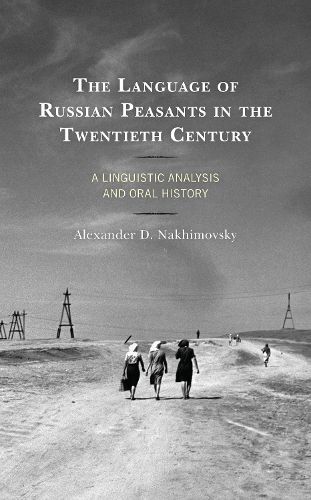Readings Newsletter
Become a Readings Member to make your shopping experience even easier.
Sign in or sign up for free!
You’re not far away from qualifying for FREE standard shipping within Australia
You’ve qualified for FREE standard shipping within Australia
The cart is loading…






The Language of Russian Peasants in the Twentieth Century: A Linguistic Analysis and Oral History analyzes the social dialect of Russian peasants in the twentieth century through letters and stories that trace their tragic history. In 1900, there were 100,000,000 peasants in Russia, but by mid-century their language was no longer passed from parents to children, resulting in no speakers of the dialect left today. In this study, Alexander D. Nakhimovsky argues that for all the variability of local dialects there was an underlying unity in them, which derived from their old shared traditions and oral nature. Their unity is best manifested in word formation, syntax, phraseology, and discourse.
Different social groups followed somewhat different paths through the maze of Soviet history, and peasants’ path was one of the most painful. The chronological organization of the book and the analysis of powerful, concise, and simple but expressive language of peasant letters and stories culminate into an oral history of their tragic Soviet experience.
$9.00 standard shipping within Australia
FREE standard shipping within Australia for orders over $100.00
Express & International shipping calculated at checkout
The Language of Russian Peasants in the Twentieth Century: A Linguistic Analysis and Oral History analyzes the social dialect of Russian peasants in the twentieth century through letters and stories that trace their tragic history. In 1900, there were 100,000,000 peasants in Russia, but by mid-century their language was no longer passed from parents to children, resulting in no speakers of the dialect left today. In this study, Alexander D. Nakhimovsky argues that for all the variability of local dialects there was an underlying unity in them, which derived from their old shared traditions and oral nature. Their unity is best manifested in word formation, syntax, phraseology, and discourse.
Different social groups followed somewhat different paths through the maze of Soviet history, and peasants’ path was one of the most painful. The chronological organization of the book and the analysis of powerful, concise, and simple but expressive language of peasant letters and stories culminate into an oral history of their tragic Soviet experience.